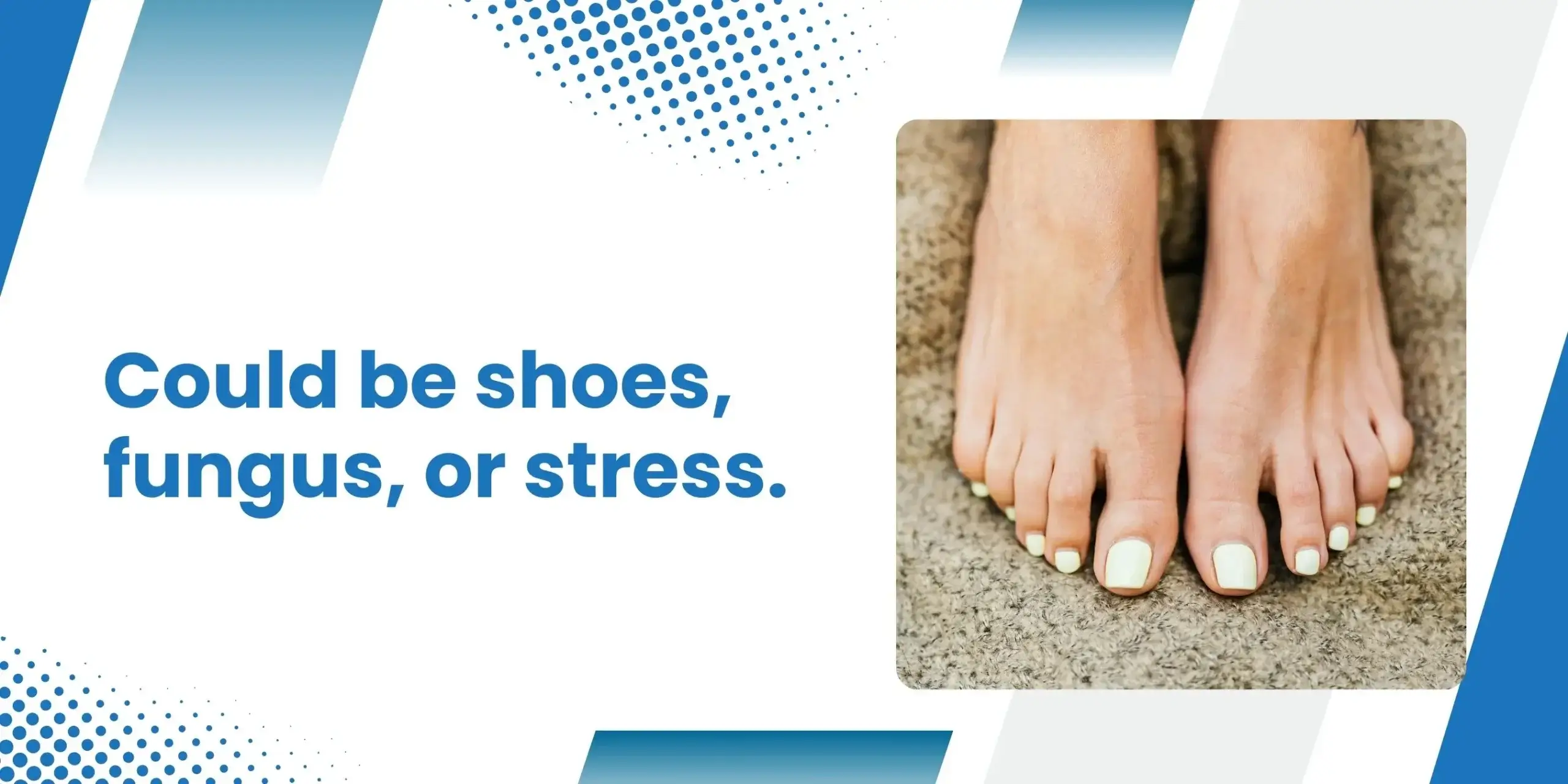It’s easy to neglect the health of your toes, until they hurt. Whether it’s hurting from walking a mile, that sharp pain in the morning, or just a sore toe for no apparent reason at all, hurting toes is a pain. They support your weight, assist with balance, and take a lot of pressure every day, so when something’s wrong, it’s no minor problem.
Toe pain may begin as a simple annoyance, but it can influence everything from your posture to your entire way of life. Disregarding it may only make things worse. The best news is that the majority of instances of painful toes are reasonable, can be treated at home, or can be treated effectively with proper care.
Learn and take a close examination at what is possibly the cause of sore toes, how to eliminate the pain, and when to call in a professional.
Common Causes of Sore Toes
There are numerous causes of sore toes. They are either temporary and minor or they are signs of a medical condition that needs to be dealt with. Some of the most common reasons are listed below:
1. Ill-Fitting Shoes
One of the most frequent offenders. Shoes that are too-high, too-tight, or too-narrow can compress your toes together, causing blisters, bunions, or even nerve discomfort.
2. Ingrown Toenail
When the toenail’s edge grows into the skin around it, the skin becomes red, swollen, and very sore. If ignored, it may become infected.
3. Bunions
A bunion is a hard growth at the bottom of your big toe. It causes your toes to rub on the other toes, making it difficult to wear shoes and walk if not taken care of previously.
4. Corns and Calluses
Repeating pressure or rubbing on your toes produces thickened, painful skin.
5. Arthritis
Joint arthritis, typically osteoarthritis or rheumatoid arthritis, typically spares the toes. It will stiffen them, swell them, and keep them chronically painful.
6. Gout
This form of arthritis develops abruptly and typically strikes the big toe. The toe becomes red, warm, swollen, and extremely painful, typically at night.
7. Turf Toe
This is observed in athletes, and it occurs when the big toe flexes too much, usually in sports played on artificial surfaces. It’s a sprain that is very painful and results in limited movement.
8. Nerve Issues
Morton’s neuroma is an illness brought about by conditions such as tingling or burning of toes, typically resulting from compression of nerves between the toes.
 Home Remedies to Try First
Home Remedies to Try First
Unless your painful toes are also inflamed, red, and sore, certain home remedies might help. Certain easy, harmless methods are:
1. Soak Your Feet
Warm water with Epsom salt may help decrease swelling and ease pain. Soak for 15 to 20 minutes to ease muscle spasms and soften the skin.
2. Ice the Area
If swelling is present or if the pain has just developed, place an ice pack wrapped in a towel on the area for 10 to 15 minutes. Never place ice on the skin.
3. Lift Your Feet
Lifting legs helps reduce swelling and facilitates circulation, particularly after many hours of walking or standing.
4. Better Choice of Shoes
Select shoes with sufficient toe space, cushioning, and proper arch support. Orthotic insoles can also decrease pressure across areas of sensitivity.
5. Apply Toe Spacers or Pads
Bunion pads or spacers made of silicone will cushion tender areas from pressure and enable toes to assume more normal positions.
6. Stretch and Strengthen
Toe exercises and foot stretches relieve stiffness, decrease tension, and strengthen support muscles.
When to Get Professional Help
Certain signs let you know something is very bad, and you must cease to look after yourself and see a professional. Do not wait if you notice:
- Increased or recurring pain
- Repeating swelling
- Warmth or redness on the toe
- Indications of infection or pus from a toenail
- Painful walking
- Deformity or shape change in the toes that can be seen
- Numbness, tingling, or burning pain
These may be indicators of more serious diseases, such as gout, arthritis, or structural abnormalities that require treatment.
What to Expect in a Podiatry Visit
Numbness, tingling, or burning pain may be relieved through the assistance of a podiatrist. An average visit will include:
- A foot and gait physical examination
- Questions about lifestyle, shoes, and medical history
- X-rays or scans when there is a fracture or joint trauma
- Diagnosis and treatment plan tailored to an individual
Treatment may involve:
- Orthotic appliances to align and support
- Medication or injections to alleviate inflammation
- Nail care or minor surgery
- Footwear assessment custom insoles
- Physical therapy for relief from chronic pain
Surgical correction, in a minority of cases, is typically only recommended for very severe bunions or deformities.
How to Keep Your Toes Happy in the Future
Prevention is better than cure. Treat your toes with some common-sense habits:
- Wear supported, properly fitting shoes
- Clip toenails straight across to avoid ingrown toenails
- Take breaks when on your feet all day
- Change worn-out shoes frequently
- Stretch toes and feet daily
- Avoid walking barefoot in public to avoid infections
Conclusion
Sore toes are not necessarily a big deal until they keep you from doing it. From the shoes that you wear to joint health, hundreds of little things can make this little but significant part of the body hurt. Being aware of when to rest, when to indulge, and when to seek assistance can be the difference.
For professional foot care and long-term comfort, Sydney Foot Clinic offers expert, personalised treatment to ease sore toes and other foot ailments. They can make feet healthy, functional, and pain-free so that every step is a pleasure.
Treat your toes today because when your feet are happy, so are you.




